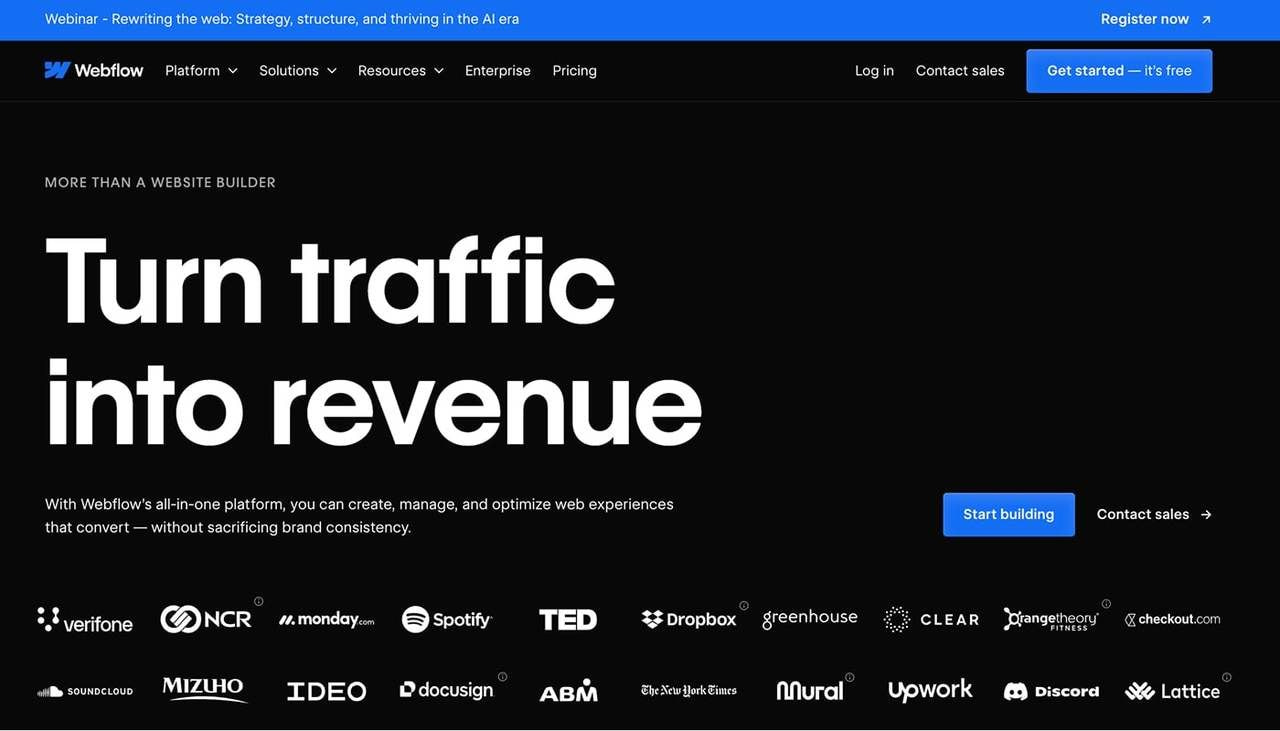Table of contents
Starting a blog in 2026? You’re in good company. Whether you're looking to share your expertise, build a personal brand, or support your ecommerce business, choosing the best blog platform is a critical first step.
But with so many options, how do you choose?
We’ll help you find the best blogging platform based on what matters most to you, from features and pricing to ease of use and flexibility.
Key takeaways
The right blogging platform for you depends on what you value most—ease of use, design flexibility, monetization, or ecommerce integrations. This guide breaks down the top choices for each.
WordPress.org offers full control for experienced users but has a learning curve, while Wix, Squarespace, and Hostinger are better suited for beginners who want to launch quickly without coding.
Platforms like Substack and Medium give you access to a built-in audience, helping writers grow without relying entirely on SEO or paid ads.
If you're running a store with Printful, platforms like Shopify and Wix make connecting blog content with product pages easy to boost traffic and conversions.
Tools like Ghost, Webflow, and Write.as support niche needs—whether you want a minimalist blog, advanced design control, or a newsletter-first model.


What to look for in a blogging platform
Not all blogging platforms are built the same. Some prioritize ease and speed; others offer full control and customization. Before we dive into the list, here’s what to consider when picking the best blogging platform—whether you’re growing a brand, supporting your online store, or simply looking for a space to share your ideas.
Ease of use (drag-and-drop vs. coding knowledge)
If you’re a beginner, start with a drag-and-drop builder like Wix, Squarespace, or the Hostinger Website Builder. These platforms let you design your blog visually—no coding, no technical setup. Simply drag elements like text, images, and buttons into place.
If you prefer full control or want to customize everything from the backend, a self-hosted WordPress blog is the way to go.
You’ll need a hosting provider like Bluehost or SiteGround, but you’ll have access to thousands of plugins, themes, design options—and full control over all the technical details behind your site.
Customization and design flexibility
Your blog should reflect your brand or personality, especially if it supports a business or online store. Whether you’re creating a branded site or a personal passion project, the right platform will help your own blog stand out with a unique look and feel.
Platforms like WordPress.org and Squarespace offer extensive customization options—from layout and color schemes to custom CSS.
Looking for a quick, no-fuss design? Use theme libraries like Envato Elements or ThemeForest to find premium blog templates. Many platforms also offer free themes to help you start without extra cost, while others rely on third-party marketplaces or premium libraries for design flexibility.
SEO tools and blogging features
To rank on Google, you’ll need built-in search engine optimization features. Look for tools that let you:
-
Edit title tags and meta descriptions
-
Add image alt text
-
Generate XML sitemaps
-
Enable clean URLs and fast load times
WordPress users can install plugins like Yoast SEO or Rank Math to handle all this easily. These tools are a big reason why WordPress remains one of the most popular blogging platforms among creators, marketers, and small businesses.
Platforms like Wix and Squarespace include SEO tools by default, while others like Ghost focus on performance to help with rankings. Other blogging platforms like Weebly or Hostinger provide lighter SEO options for quick publishing.
Monetization options
Building a successful blog isn’t just about traffic—it’s about turning readers into revenue. If monetization is your goal, look for powerful tools like:
-
Ads and affiliate links: WordPress, Blogger, and Medium support monetizing with Google AdSense or affiliate platforms like ShareASale and Amazon Associates
-
Digital product sales: Squarespace, Shopify, and Podia let you sell ebooks, templates, and courses right from your blog
The right blogging platform depends on what you’re selling—or plan to offer later.
Ecommerce integrations
If your blog supports a business, it should work hand-in-hand with your online store. Platforms like Shopify, Wix, and Squarespace let you embed products directly into blog posts, boosting SEO and conversions.
Running a print-on-demand store? Make sure your platform connects smoothly with services like Printful, so your content creation feeds naturally into product discovery and sales.
Printful’s print-on-demand platform makes adding custom products to your store easy, with no upfront costs.
Hosting type (free vs. self-hosted)
Free blogging platforms like Blogger or Medium are great for getting started quickly, but they often limit your ability to customize, monetize, or scale.
A hosted platform like Wix or Squarespace manages everything for you—site speed, backups, security—while giving you more control than free options. A self-hosted WordPress site, however, offers the most flexibility, but you’ll need your own managed hosting and more technical knowledge to maintain it.
Pricing
Most platforms offer a free plan with basic features, but you’ll likely need to upgrade for things like:
-
A custom domain name (e.g., yourblog.com)
-
Extra storage or bandwidth
-
Premium design templates
-
Advanced analytics or integrations
Before committing, don’t just compare monthly fees—look at what’s included too. Tools like Pricing.io or comparison features on hosting platforms can help you evaluate your real cost of ownership.
15 Best blogging platforms in 2026
There are countless blogging tools out there, but not all will fit your goals. Whether you’re launching a content strategy for your store, starting a personal blog, or aiming to monetize your writing, these are the best blogging platforms to consider in 2026.
1. WordPress.org
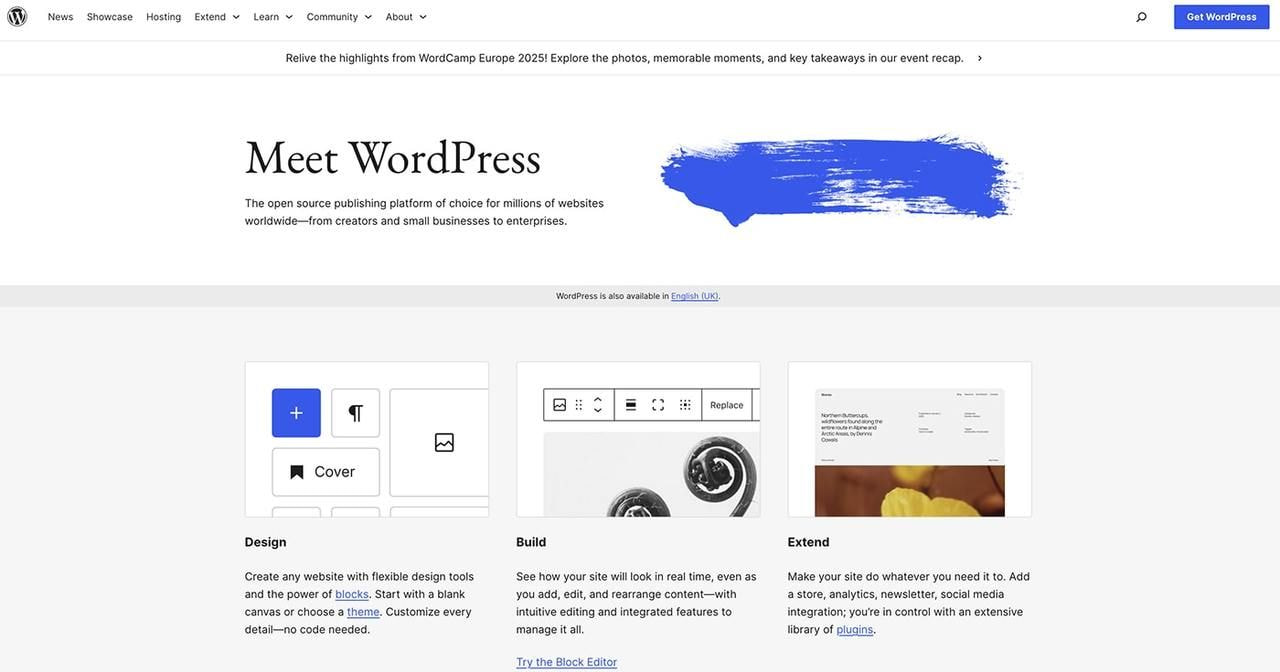
Source: WordPress
If you want complete freedom over your blogging journey, WordPress.org is a classic and the gold standard for total control. It’s a self-hosted WordPress platform that gives you everything: thousands of plugins, SEO control, custom themes, and ecommerce support.
You’ll need a hosting provider like Bluehost or SiteGround, as well as some technical knowledge. But in return, you get complete access to plugins, themes, SEO tools, ecommerce features, scheduling tools, and the support of a global WordPress community constantly creating and improving resources.
Best for: Experienced and professional bloggers, business websites, creators, and anyone who wants to own every pixel.
2. Squarespace
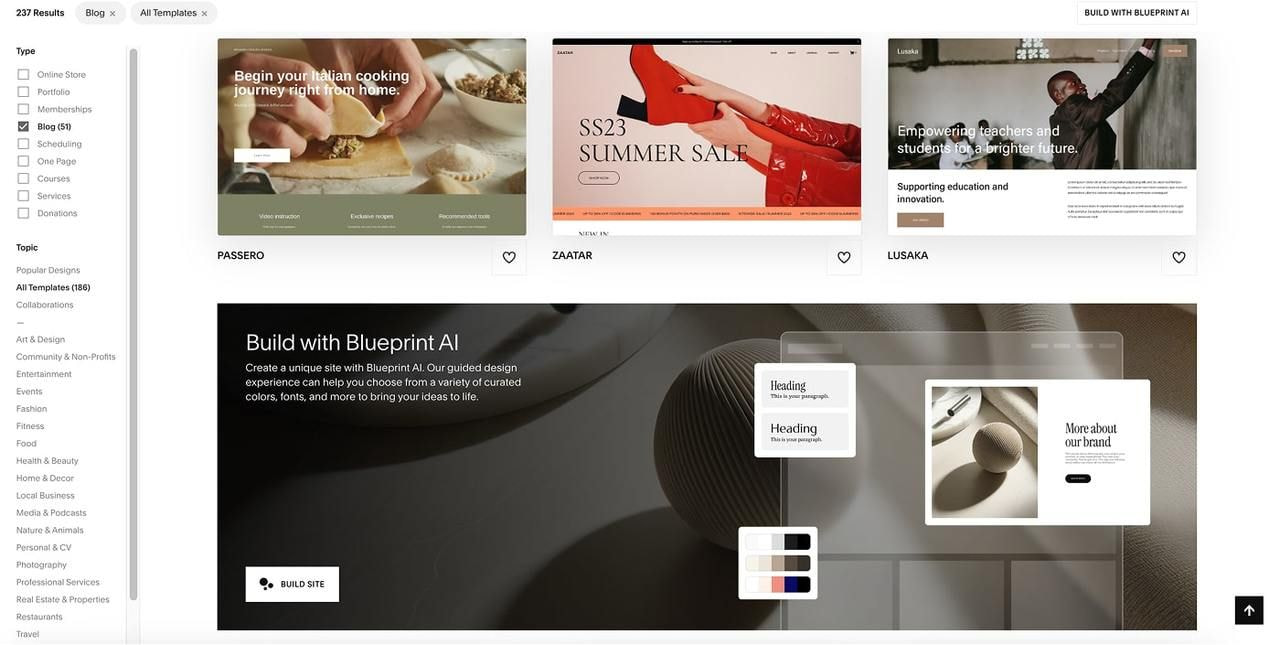
Source: Squarespace
For creators who want their blog to look as good as it reads, Squarespace is a popular design-focused option. Its polished templates, built-in analytics, smooth drag and drop editor, and AI tools make it easy to launch a brand-forward blog.
Squarespace also supports built-in monetization tools like member areas and digital product sales, making it a sleek choice for bloggers who care about presentation and simplicity.
Best for: Designers, freelancers, and personal brands who want a beautiful blog without custom coding.
3. Wix
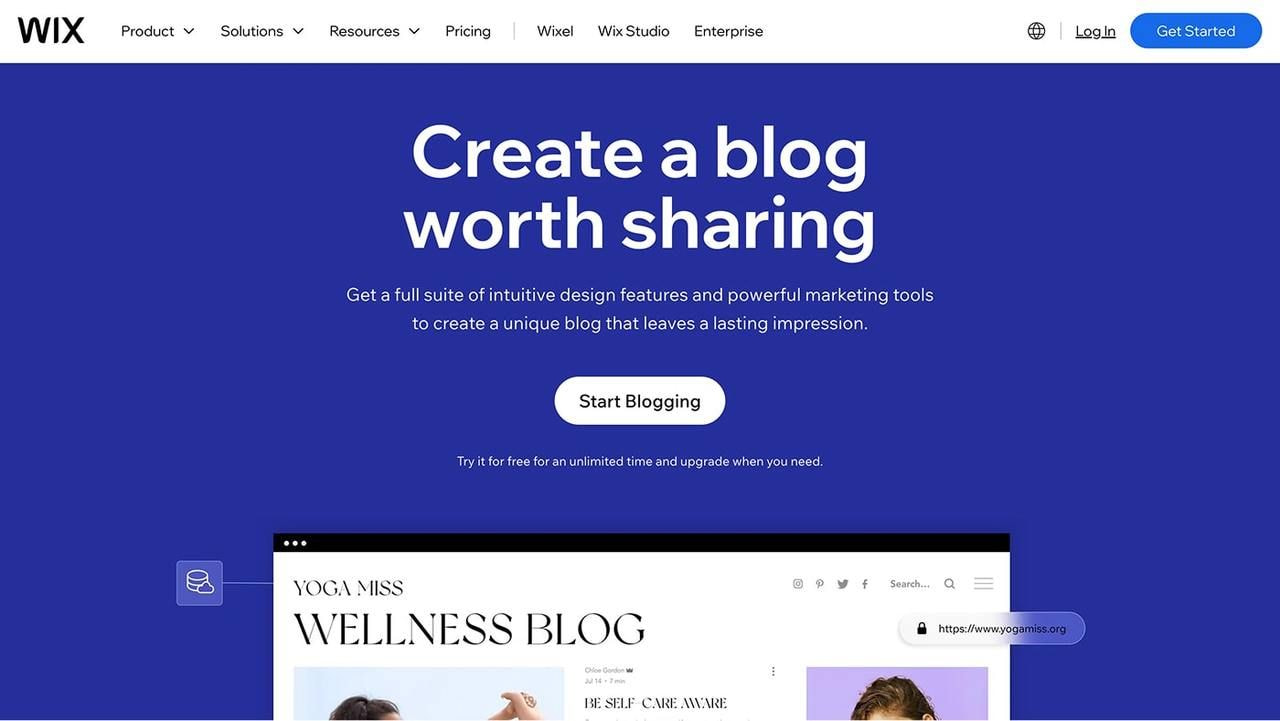
Source: Wix
If you want to build a professional-looking blog fast without touching a line of code, Wix is one of the most beginner-friendly options on the market. Its intuitive drag and drop editor, modern templates, and built-in SEO settings and AI tools make it easy to launch and grow your site—even with zero experience.
Wix offers a solid free plan, and upgrading gives you access to a custom domain, expanded storage, and more design flexibility. It's ideal for small business owners or creators who want a visual site without the WordPress learning curve.
Best for: Beginners, side hustlers, and small businesses that want an easy, no-code start.
4. Medium
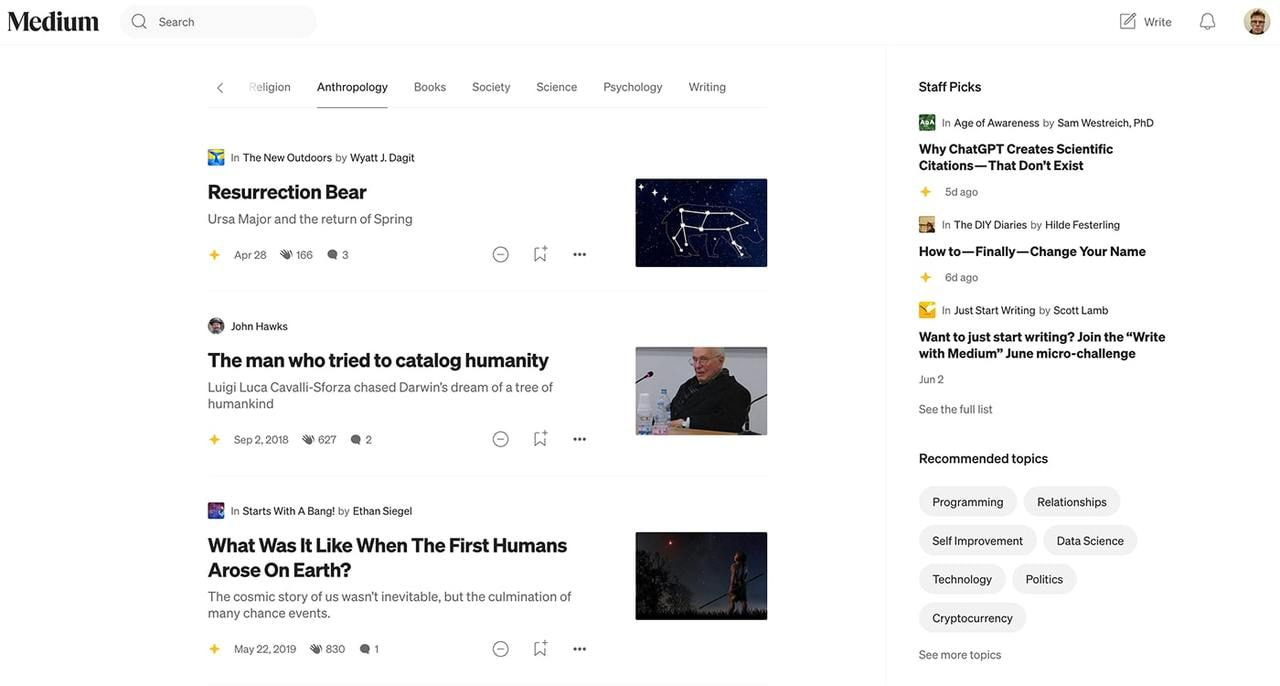
Source: Medium
Medium is a unique blogging space that emphasizes writing and reader experience over customization. You publish under your own profile but also gain access to a built-in audience already reading and engaging on the platform.
It’s not a traditional blog where you control every element, but it’s a great place to share ideas, essays, and stories while reaching new readers organically. Writers can also join the Medium Partner Program to monetize their work, allowing them to earn money and put their articles behind a paywall.
Best for: Bloggers, journalists, and experts who want to focus on writing and reach a ready-made audience.
5. Ghost
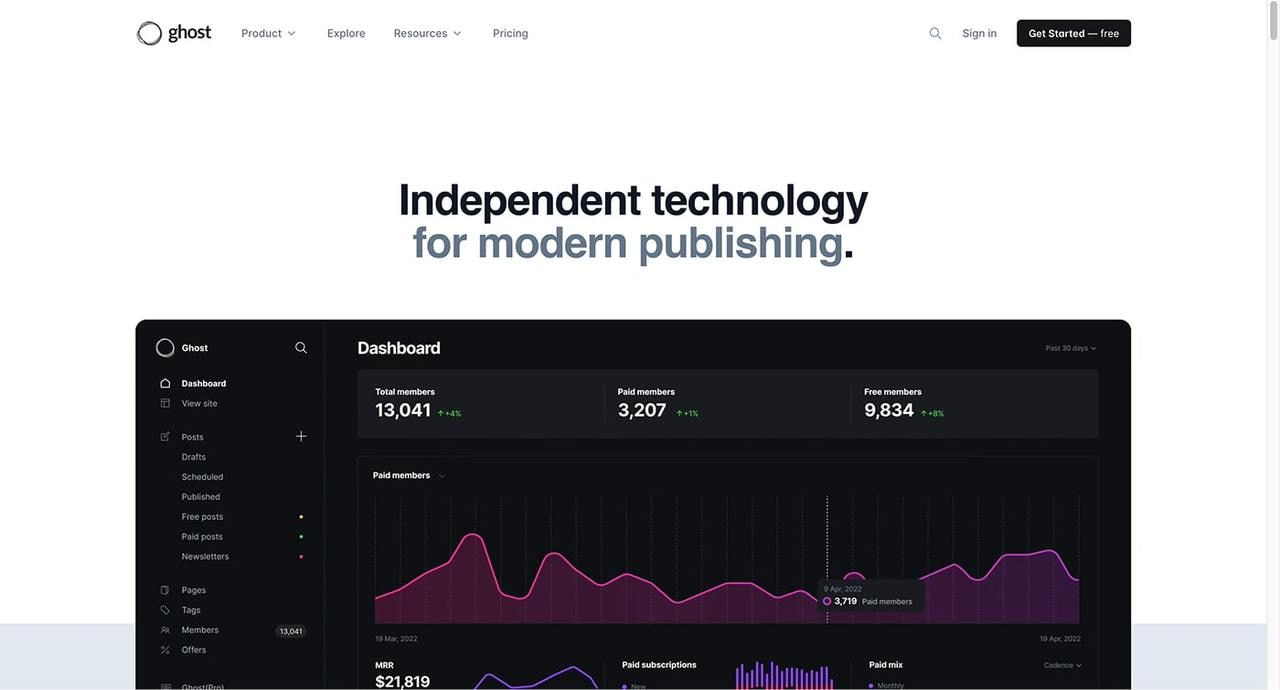
Source: Ghost
Ghost is a minimalist, fast-loading blogging platform for writers, newsletters, and subscriptions. It focuses on clean design and speed, with a distraction-free editor and features built for publishing, not just websites.
You can self-host it or opt for Ghost’s hosted version, which handles all the setup and maintenance for you. Unlike top blogging platforms focusing on all-in-one web design, Ghost is laser-focused on clean publishing and paid content delivery.
It also includes powerful monetization tools, native email, and content gating, making it ideal for serious writers looking to scale without relying on third-party platforms.
Best for: Publishers, creators, and bloggers focused on memberships or premium content.
6. Blogger
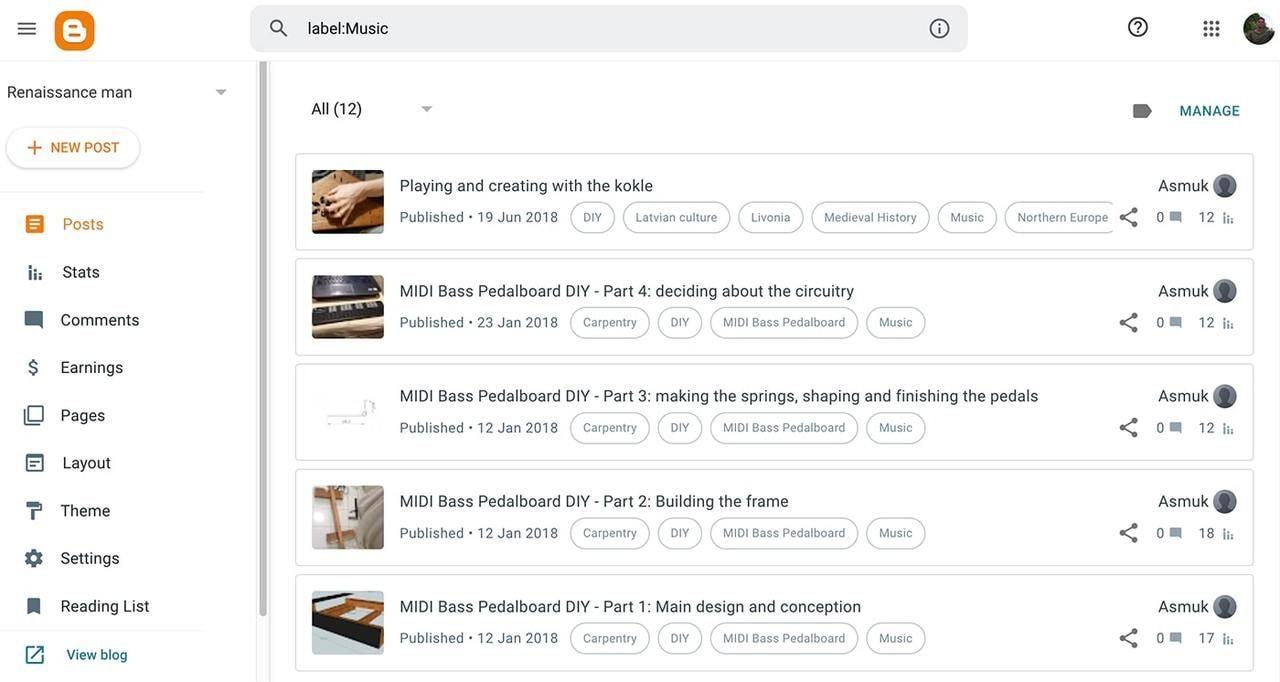
Source: Blogger
Blogger is Google’s long-standing free blogging platform, and it still works surprisingly well if you just want to write and share.
Every blog receives a free blogspot.com domain. You don’t get modern designs, deep customization options, or advanced features, but it’s free, reliable, and simple. For those looking to earn money, it’s also possible to monetize your blog through Google AdSense.
It’s best used as a testing ground or hobby project before upgrading to a more robust platform, especially if you’re new to blogging.
Best for: Hobbyists and casual bloggers who want a free way to start writing online.


7. Substack
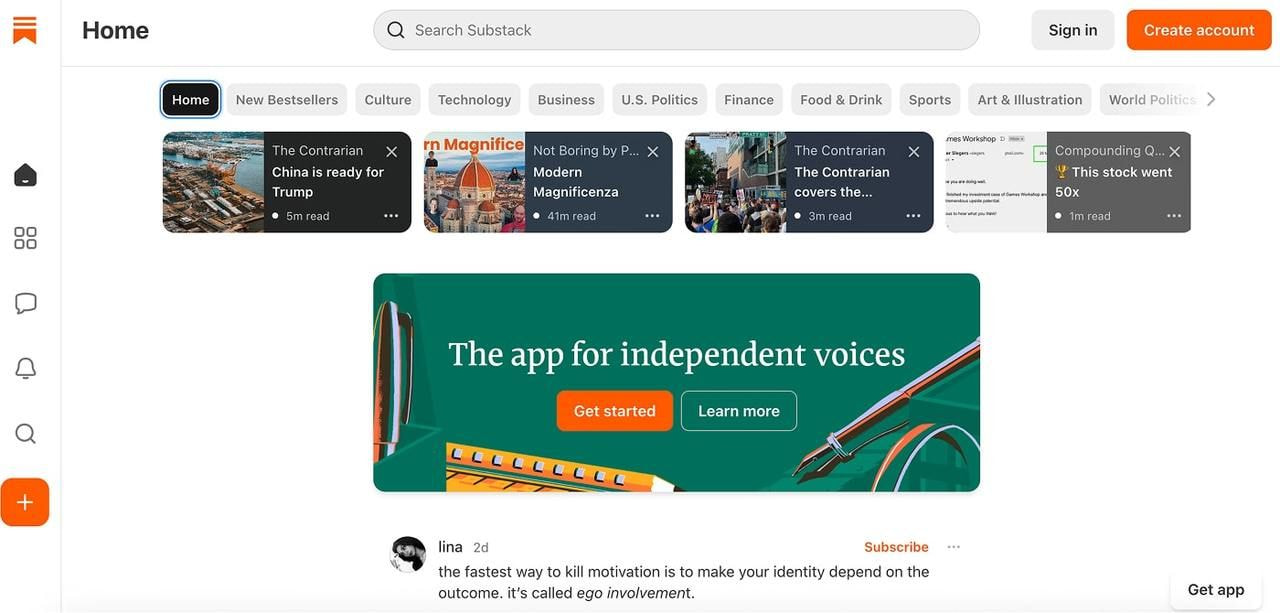
Source: Substack
Substack blends blogging and newsletters into one easy platform, with built-in tools to grow your audience and charge for content. It removes the need for a website altogether—your blog lives in email inboxes and on your Substack page.
You don’t need to worry about setup, hosting, or even payment processors. Substack handles everything so you can focus on writing and building a loyal, paying subscriber base.
Best for: Writers, niche experts, and thought leaders focused on email-first publishing and community-building.
8. Super.so (Notion)
.jpg)
Source: Super.so
If you already organize your work in Notion, Super.so lets you turn any Notion page into a live blog or website. It’s a clever way to repurpose your content without needing a traditional CMS or website builder.
It’s fast and lightweight, though not ideal if you need heavy customization or aren’t familiar with Notion. Still, for creators and indie professionals, it’s refreshingly simple and efficient.
Best for: Creators, startups, and tech-savvy bloggers who want to publish quickly using tools they already love.
9. LinkedIn Articles
If you already have a professional network, LinkedIn Articles can be a smart way to blog directly to an existing audience. There’s no setup required—simply start writing from your LinkedIn profile and publish content that reaches your connections, followers, and even search engines.
While it’s not a traditional blogging host, it’s perfect for thought leadership, niche content, and building your brand in professional circles. Plus, your posts benefit from LinkedIn’s built-in online marketing features like post notifications and engagement insights.
Best for: Coaches, consultants, and professionals who want to blog within a ready-made network.
10. Hostinger Website Builder
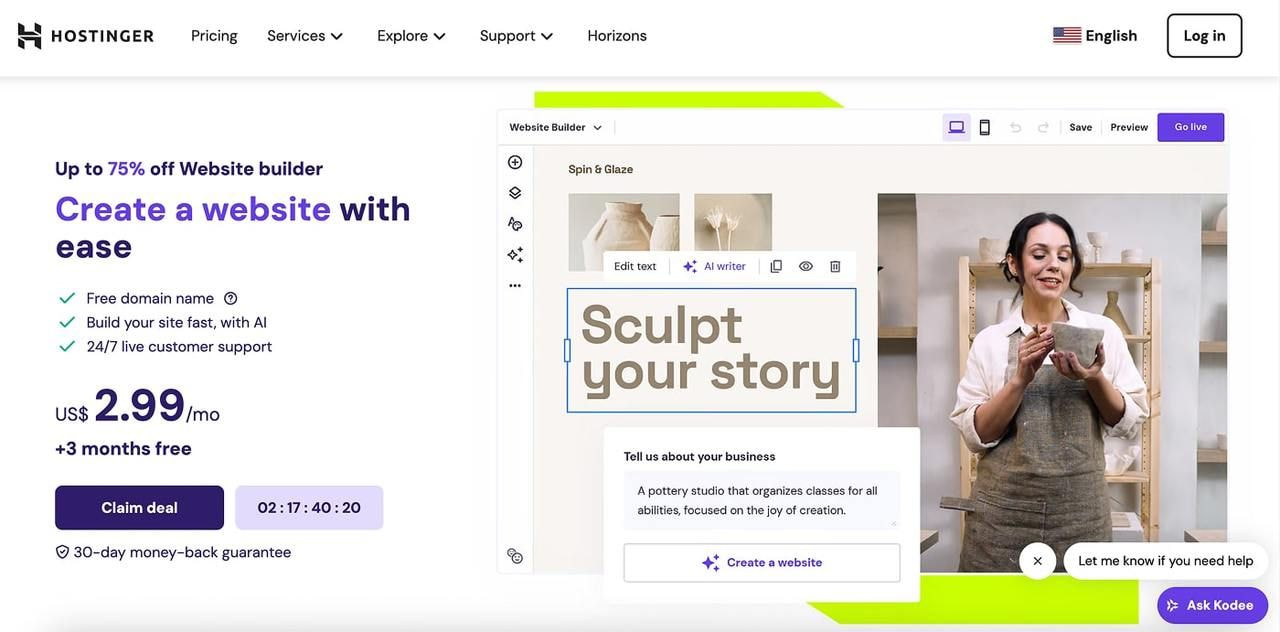
Source: Hostinger
If you’re launching your first blog and want something fast, functional, and affordable, the Hostinger Website Builder checks all the boxes. It includes a smart drag-and-drop builder, AI-powered writing support, and built-in SEO tools to help you get noticed.
Plans include a free domain, hosting, and a surprisingly rich feature set for the price. It’s not as customizable as WordPress, but it’s perfect for getting started without headaches.
Best for: Beginners and small business owners looking for a budget-friendly, all-in-one blogging platform.
11. Weebly
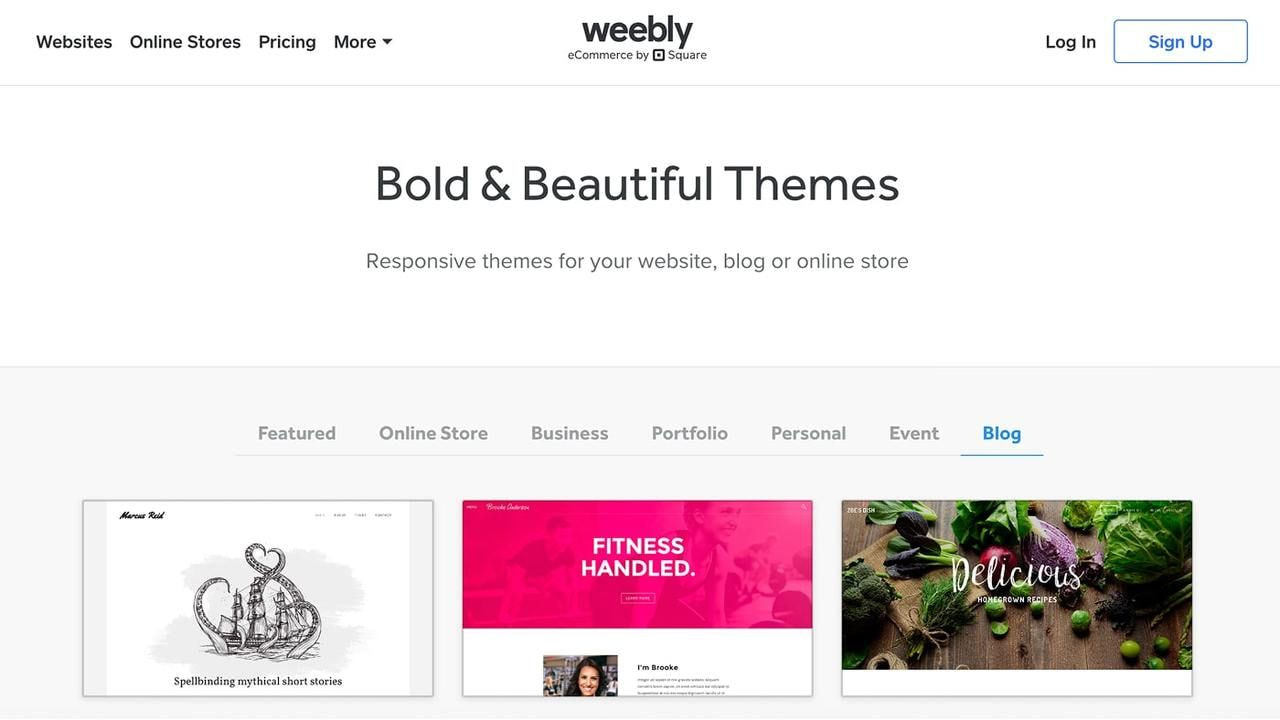
Source: Weebly
Weebly offers one of the easiest blogging experiences. Its drag-and-drop builder, flexible templates, and strong free plan make it great for users wanting a no-hassle setup.
While customization is limited compared to WordPress or Ghost, Weebly’s ease of use and ecommerce features make it a solid pick for local businesses and casual bloggers alike.
Best for: Bloggers who want a simple, budget-friendly setup with basic features and store capabilities.
12. Typefully
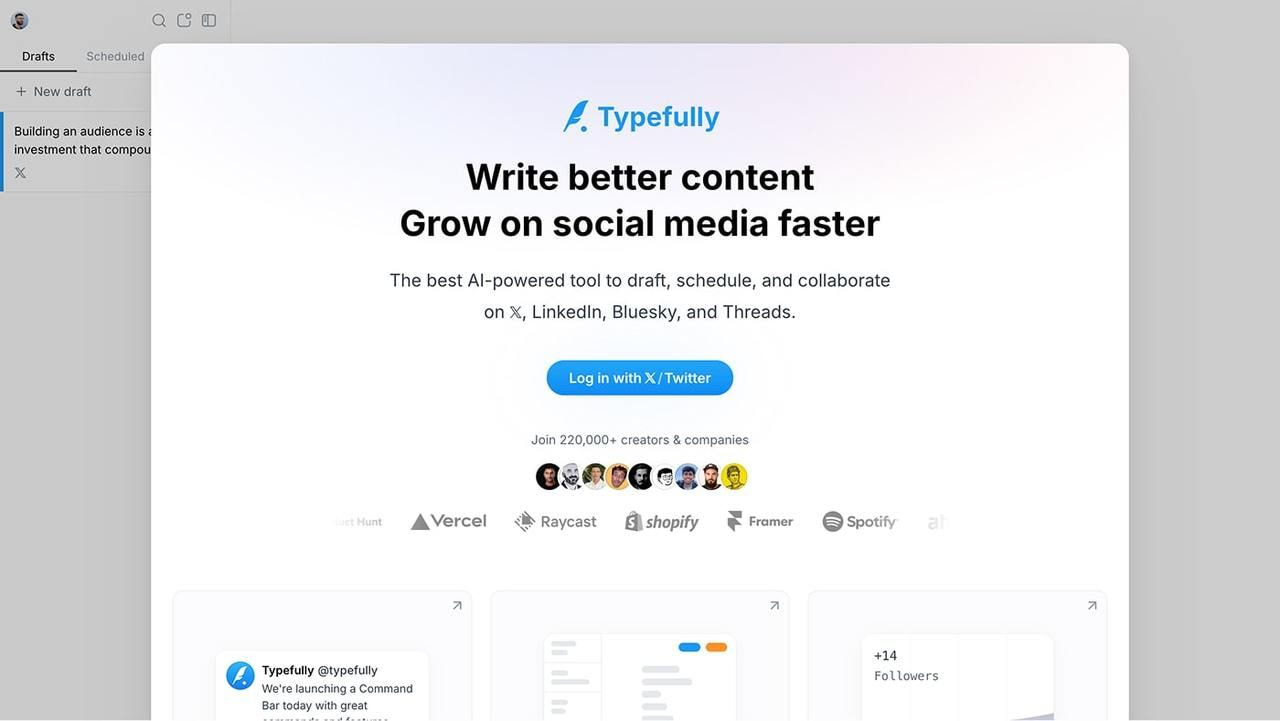
Source: Typefully
Typefully started as a Twitter/X thread tool but now includes a sleek blogging feature that lets creators publish content on a clean, custom-branded page. It’s focused on writing, publishing, and repurposing social posts into long-form ideas—all in one minimal interface.
You won’t find advanced design tools here, but its simplicity, auto-formatting, and integrations with social platforms make it perfect for creators building an audience directly from short-form content.
Best for: Content creators and Twitter/X users who want to turn social threads into blog posts without managing a full website.
13. Webflow
Source: Webflow
If you want pixel-perfect design without giving up flexibility, Webflow offers the power of coding—without needing to code. It’s more advanced than typical drag-and-drop tools but gives you unmatched control over layout, responsiveness on mobile devices, and animations.
Webflow includes essential features like a CMS, SEO controls, and even ecommerce, though it doesn’t come with a free plan beyond limited staging use. Think of it as a designer’s dream that also serves as one of the best blog hosting sites for custom builds.
Best for: Designers, startups, and brands who want full creative control without a developer.
14. Shopify Blog
If your main focus is selling products online, Shopify’s Blog feature is an ideal add-on. It’s built directly into your Shopify dashboard, so you can publish posts that promote products, boost SEO, and support your ecommerce funnel.
You won’t get the design flexibility of standalone platforms, but it’s a powerful content tool for anyone using Shopify as their all-in-one platform for business.
Best for: Ecommerce entrepreneurs who want blog content to drive traffic and conversions.
15. Write.as
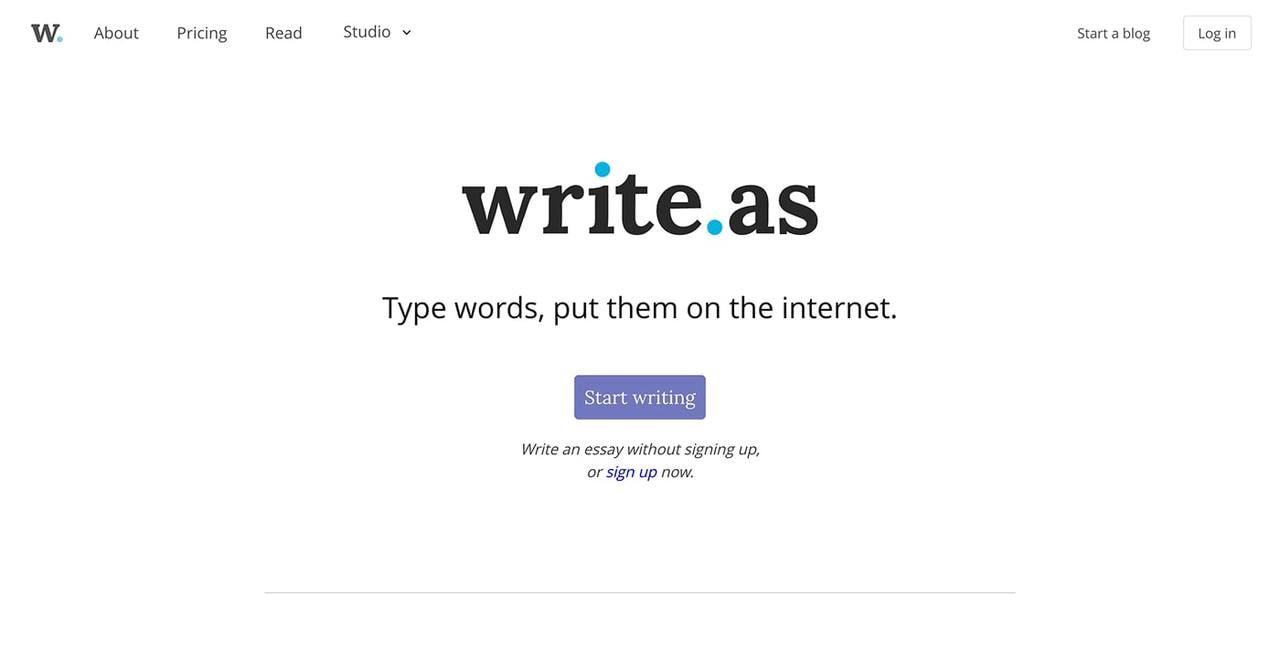
Source: Write.as
Write.as is a distraction-free platform for minimalist blogging. It strips away everything except writing—no themes, no clutter—just a clean interface to publish content quickly. It also allows anonymous publishing or posting under multiple identities and makes it easy to collaborate with other writers.
There’s a free plan, and upgrading unlocks all the features, including newsletters and custom domains. It may not be one of the best websites to start a blog if you're focused on design, but it’s a great option for simplicity and privacy.
Best for: Writers, journaling enthusiasts, and bloggers who value focus over frills.
Blogging platform comparison table
|
Platform |
Ease of Use |
Best For |
Free (Paid) Plan |
Ecommerce Friendly |
|
WordPress.org |
Moderate (tech-savvy) |
Full customization, SEO |
No (hosting needed) |
Yes (via plugins) |
|
Squarespace |
Easy (drag-and-drop) |
Creatives, professional blogs |
No (14-day trial) |
Yes |
|
Wix |
Easy (drag-and-drop) |
Visual blogs, small businesses |
Yes |
Yes |
|
Medium |
Easy |
Thought leadership, reach |
Yes |
No |
|
Ghost |
Moderate |
Content creators, newsletters |
No (paid hosted) |
Some integrations |
|
Blogger |
Very easy |
Hobby bloggers |
Yes |
No |
|
Substack |
Very easy |
Writers, niche experts |
Yes |
No |
|
Notion + Super.so |
Moderate |
Personal sites, minimalists |
No |
No |
|
LinkedIn Articles |
Very easy |
Professional thought leadership |
Yes |
No |
|
Hostinger |
Easy |
Beginners, fast setup |
Yes (low-cost plans) |
Basic |
|
Weebly |
Easy |
Simple blog sites |
Yes |
Yes |
|
Typefully |
Very easy |
Social-first blogging |
Yes (with upgrades) |
No |
|
Webflow |
Moderate (design-savvy) |
Custom builds, brand-focused sites |
Limited (paid CMS) |
Yes (via integrations) |
|
Shopify Blog |
Moderate |
Ecommerce businesses |
No (free trial) |
Yes (native) |
|
Write.as |
Very easy |
Minimalist blogging, writing focus |
Yes (with upgrades) |
No |
Conclusion
There’s no one-size-fits-all answer to the best blogging platform. Your ideal setup depends on your goals, experience, and the type of blog you want to build.
Want full ownership and flexibility? Self-hosted WordPress is unbeatable for serious content creation and scaling.
Starting fresh and want something simple? Wix, Squarespace, or Hostinger are ideal all-in-one solutions.
Building your Printful store? Use Shopify to manage your professional site and blog in one place.
And if you just want to start sharing your voice? Platforms like Substack, Medium, or Ghost offer an easy start and strong community tools.
Whichever you choose, the key is to start writing, stay consistent, and let your blog grow with your audience.


FAQ
If you're a beginner, Wix or Hostinger are excellent for their drag-and-drop ease and built-in tools. For more control, try self-hosted WordPress.
Yes—but it takes time. With a clear niche, search engine visibility, and powerful monetization tools (ads, affiliate links, or products), earning $1,000/month is realistic.
For ease of use and setup, Wix, Weebly, and Substack are great starting points for your blogging journey.
It depends on your niche, traffic, and monetization. With consistent content creation and promotion on social media platforms, many bloggers hit this milestone in 6–12 months.

Published author, scholar, and musician, Andris draws on over 11 years of experience in and outside academia to make complex topics accessible – from SEO and website building to AI and monetizing art. Devoted to his family and self-confessed introvert, he loves creating things, playing musical instruments, and walking around forests.






